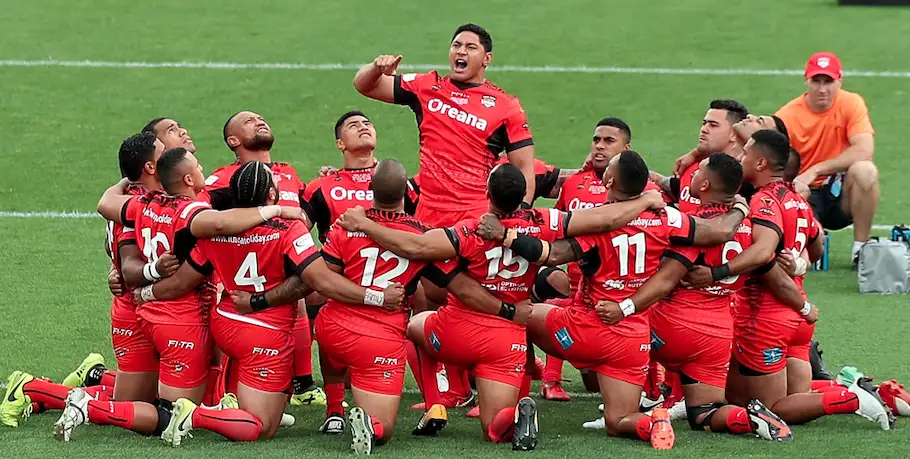International rugby league undermines itself yet again

Just two years ago, Tonga were the story of the 2017 World Cup, a beacon of hope for the international game.
Having persuaded superstar forwards Jason Taumalolo and Andrew Fifita to snub New Zealand and Australia respectively to represent their heritage, the Tongan team won hearts across both hemispheres in their run to the semi-finals, where they suffered the narrowest of defeats to England.
Now, the Tongan national team finds itself embroiled in a political dispute that is perhaps typical of international rugby league.
Coach Kristian Woolf, responsible for bringing together the core of the squad and leading them to fourth in the world, has been given his marching orders and his replacement, Garth Brennan, has already quit having discovered the scale of the infighting at the Tongan NRL.
The aforementioned Fifita and Taumalolo are at the head of a player dispute with TNRL chairman George Koloamatangi and secretary William Edwards, with several other players also refusing to play unless there is change.
They courted yet more controversy this week by sensationally announcing that disgraced multi-code star Israel Folau was in contention for this autumn’s tests against New Zealand and Great Britain, only for the RLIF to deny that his return to rugby league had been approved in a hastily released statement soon after to a backdrop of criticism.
In the shadows of the rugby union World Cup currently taking part in Japan, it’s not a good look for rugby league to see its apparent fourth best nation being ripped to shreds.
But it’s typical of the international game that continues to flatter to deceive, with leaders still not having managed to implement a consistent and organised international calendar, meaning games are barely known a year in advance, let alone any further.
That has an impact on ticket sales, broadcast deals and sponsorship, and shows no sign of improving, despite the regularly claims from the RLIF congress that progress is being made.
We still await the legacy of the 2013 World Cup in England (Wales, France and Ireland), when there are now just two years until the next one – which will hopefully learn from the missed opportunities of the last one.
You only have to look back at that tournament to remember two of the biggest stories from it – the success of Italy and USA.
Italy beat England in a pre-tournament friendly, while the Tomahawks caught attention for their run to the quarter-finals, ruining the organisers’ plan for Wales to play in Wrexham in the last eight, where they lost to Australia.
Following that World Cup, any tangible progress by USA was all but lost in a dispute between the AMNRL and USARL, which saw stewardship of the national transferred from the former to the latter, and the team rebranded to Hawks.
Italy had similar political issues, with two bodies claiming the rights of the national team, almost rendering the progress of Carlo Napolitano obsolete before it had even begun.
World Cup years skew results significantly – with Italy beating England one year and then losing handsomely to Serbia the next, due to the sheer difference in available players.
There’s a theory that international rugby league is what the sport needs to grow.
When it comes to Great Britain, Australia and New Zealand, that much is true.
But shoehorning artificial countries forward is not.
In Australia recently, the first international rugby league match for Peru took place against Uruguay. This pretence of international growth does more harm than good, and was effectively just a load of local players with South American heritage playing under a country’s banner. Very few, if any, people in Peru will have heard about this match or rugby league.
Likewise, nations flooding their teams with heritage players, such as Italy and USA, harms the genuine work done by the likes of Wales and France in developing players and clubs, with them being punished for ultimately using their own players, who aren’t necessarily up to the standards of the English or Australian players pulling on the respective jerseys of Scotland, Italy or USA.
The way to develop a genuine international game is to surely get clubs and players playing in these nations – not pulling in players to represent them for a couple of years and then disappear with no lasting legacy.
You only have to look at the Rugby union World Cup for how this helps progress – the Russia team, for example, was almost exclusively of Russian-based players, with just two playing their rugby overseas. While Japan carried a handful of naturalised players, these were all players who had played their domestic rugby in Japan for multiple years and as a result, had earned citizenship and the right to play for the national team.
While Taumalolo and Fifita were lauded for representing their heritage, their presence also undermines international rugby league by the fact that they have represented their birth countries multiple times, in Taumalolo’s case barely months before he put on the Tonga shirt at the World Cup.
Until the issues of political infighting and a lack of governance from a relatively powerless RLIF are addressed, then any efforts to grow international rugby league – to bring whatever benefits it might do – will be wasted.